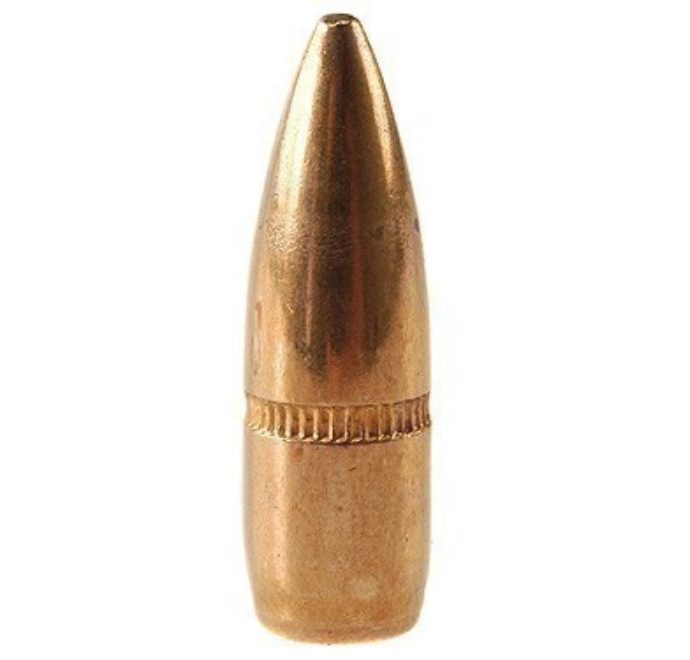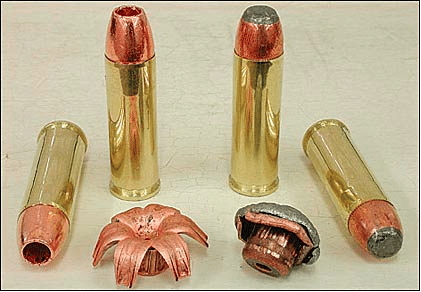How You Know if Your Gun Is a 40 or 45 Caliber
The 40. and 45. caliber bullets are by no means as shut as the may look on paper and if you're feeling confident enough with the 40. caliber and want something with a fleck more of a kick then it'southward all-time that you fully arm yourself with the details of each earlier you step up to a .45 quotient bullet.

SAFEST NEWSLETTER - WE WILL NEVER SELL YOUR EMAIL
GET GREAT GUN AND AMMO DEALS!
SENT ONCE A WEEK - NO SPAM - NO SELLING YOUR EMAIL
Table of Contents
- 1 Become GREAT GUN AND AMMO DEALS!
- 2 Offset a fleck of background
- 3 Types of bullets
- iii.1 Full Metal Jacketed (FMJ)
- iii.2 Jacketed Hollow Points
- four Caliber
- 5 Additional Factors
- v.1 Accuracy
- 5.2 Recoil
- 5.3 Cost
- vi Bestsellers
- 7 Conclusion
Kickoff a bit of groundwork
.40 Cal – Designed in 1990 by S&W (Smith & Wesson), the .40 Cal bullet was fabricated in response to the FBI wanting a replacement for their .38 Cal handguns. They wanted something that would give them more than ammunition capacity, greater reliability, was easier to reload and had less velocity. And so the .40 Cal was adult and is now used by all agents in the field.
.45 Cal – Because the underperformance of double action revolvers such every bit the .303 British and .38 Long Colt in the wars of the early on 20th Century, both the American Regular army and Cavalry requested the harder hitting .45 Cal. The showtime model came out in 1905 and was after modified to produce the .45 ACP cartridge.
Types of bullets
Though the measurements and 'stopping power' of each bullet may differ they do use the aforementioned type of bullet: Full Metal Jacketed and Jacketed Hollow Point.
Full Metallic Jacketed (FMJ)

Made in lead, the projectiles in these come encased in a copper jacket. An FMJ bullet penetrates well only doesn't provide expansion on impact. This is noteworthy as it may go on through the target and hitting other bystanders and subsequently, about regard these every bit a dandy purchase for target practice.
Jacketed Hollow Points

In opposition to FMJ's, Jacketed Hollow Bespeak bullets do offer expansion on bear upon creating a larger amount of damage and reducing the chance of peripheral damage by slowing the bullet down due to the jacketed copper cartridge. If your conclusion to purchase guns for cocky-defense, so it is highly recommended that you become this type of bullet.
Caliber
The almost obvious difference between these two is the caliber and it'southward worth knowing a couple of things about it.

The quotient or calibre of a bullet is the diameter of the entire unit or cartridge every bit it is more ordinarily known. For instance, a .45 caliber bullet has a diameter of .45 inches and can be referred to as a ".45" or ".45 Cal". This can too be expressed through the metric scale. A .45 Cal bullet is 11.43 mm. When using the metric scale it is common for the length to be expressed too e.one thousand. 9mm x 19mm ways that the bullet has a diameter of 9mm and a length of 19mm
When testing bullets and compiling ballistic reports on them, other measurements are taken into consideration. They are:
- Grain (gr)– Weight of the bullet. 7000gr = 1lb
- Velocity (ft/s)– Speed of the bullet in feet per second (ft/south).
- Energy (J)– Potential destructive force of the bullet, measured in Joules.
- Foot-Pound Force (ft-lbf)– Another measurement of Energy.
The grain is what gives a bullet its punch and because the laws of physics need the college the weight of an object, the more powerful the impact is; the higher the grain of a bullet, the more damage you will inevitably cause. This upshot is commonly referred to as a bullets' "stopping power".
A .40 Cal bullet has grains of betwixt 115 and 175, whereas a .45 Cal bullet has betwixt 185 and 255 so it'south not difficult to run across that .45 Cal is going to take considerably more than stopping ability and give y'all more bang for your cadet.
Velocity refers to the speed of the bullet in feet per 2d (ft/southward) when it leaves the barrel. Interestingly for all the extra ability that the .45 has, it'due south bodily velocity is less than it'south .40 Cal counterpoint.
When information technology comes to the energy of the bullets though, the .45 Cal hands out guns (sorry for the pun) the .xl Cal with 50 more joules and 200 ft-lbf.
For a clearer ballistic comparison of the two check out this table beneath or go here for more ballistic information on other caliber bullets.

Additional Factors
The ballistics written report is but 1 side of the story though and other factors do come in to play when comparison the two bullets. Here are the ones nosotros think you should exist nigh enlightened of.
Accuracy
A lot of the accuracy comes downwardly to quite a number of factors such equally the gun used, current of air velocity at various distances, butt size and yes, fifty-fifty the competence of the shooter themselves. Some people tin can't striking a barn door with a truck tire.
Both are excellent at short range, nevertheless, even if y'all're a crevice shot, the velocity of the bullet will bear on its accuracy over longer distances. The .45 Cal has a lower velocity and therefore more focus must be placed on trajectory when shooting the ammo.
Recoil
The recoil of a firearm should never be ignored and although the .45 Cal has greater penetration, the recoil is less than that of a .40 Cal.
Evidently, this is subjective to the shooter but to give you lot an thought of the difference, .40 Cal has been described as "abrupt" and with a existent snap which makes information technology slower to re-aim for follow up shots than the .45 Cal.
That said, the .45 Cal is known to push shooter'due south hands dorsum instead of upward and doesn't have a lot of cage flip.
Cost
The price of these bullets may vary depending on where you purchase them but as a dominion of thumb, the .45 Cal is generally 20% – threescore% dearer than the .forty Cal.
Bestsellers
 For more details on each of the bestsellers on this folio check out this page. Bare in heed that these are but suggestions and other bottom known brands will work only as competently.
For more details on each of the bestsellers on this folio check out this page. Bare in heed that these are but suggestions and other bottom known brands will work only as competently.
.forty Cal
- Winchester 180gr Ranger Bonded
- Remmington 180gr Ultimate Defense
- Winchester 165gr PDX-1 Defender
- Winchester 165gr Ranger Bonded
.45 Cal
- Federal 230gr HST
- Speer 230gr Gold Dot
- Federal 230gr Tactical Bonded
- Winchester 230gr Ranger T-Series
- Blazer Brass 230gr FMJ
- PMC 230gr FMJ
All these types have their ain idiosyncrasies and you should be sure to test them out at a firing range before making whatever final decisions. Finding the right match for your handgun is essential.
Determination
Y'all should at present have a good general thought of the differences between these two bullets and be able to make an informed decision as to what suits you best.
Remember if you are looking to purchase for cocky-defence force so a hollow point is probably the all-time choice for you as the expansion is good enough to terminate anyone in their tracks.
If you lot want bullets purely for the firing range then the cheaper Total Metallic Jacket is the one for y'all.
There is no such matter as non plenty research when it comes to buying firearms so make sure to do your homework. Enjoy and be condom when shooting.
Related Reads:
- Ultimate Guide To Bullets
- Matching Twist And Bullets
- Bullets To The 10-treme
- Devious Bullet At Baseball
Source: https://gunnewsdaily.com/40-cal-vs-45-cal-bullets/
0 Response to "How You Know if Your Gun Is a 40 or 45 Caliber"
Postar um comentário